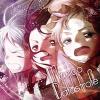
[MOC] AGEIR Boxcab (CNJ #1000)
By
jtlan, in LEGO Train Tech
-
Recently Browsing 0 members
No registered users viewing this page.

By
jtlan, in LEGO Train Tech
No registered users viewing this page.